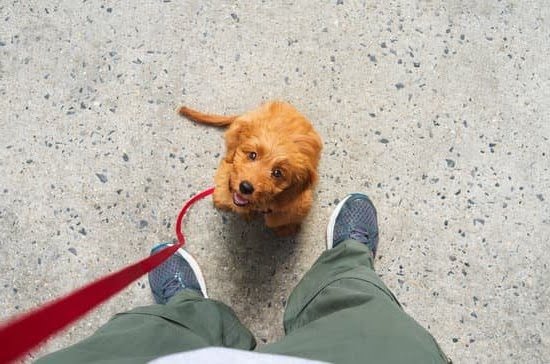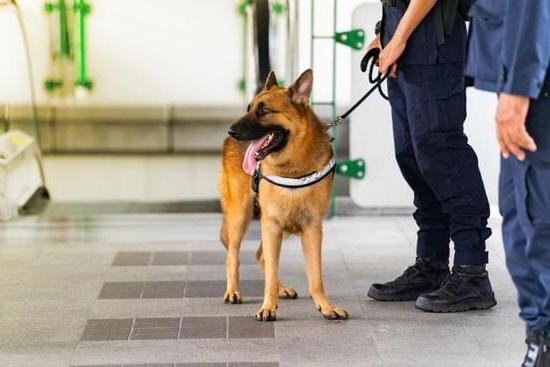Introduction
Crate training a dog is a great way to provide canine companions with safety, security, and enrichment. Crate training also provides owners with peace of mind knowing that their dogs are being responsibly managed while they are away from home. The key to successful crate training is to make the crate an inviting place where your dog can retreat when they need rest or privacy.
Ultimately, the benefits of crate training for both the owner and the dog are numerous – but may vary depending on your specific pup’s preferences and needs. For example, crate training allows dogs time to relax away from stressors such as loud sounds and large crowds. Dogs will also develop better self-control habits since keeping them confined will ensure that they don’t engage in destructive behavior or wander off during times when you cannot be around to supervise them. Furthermore, crate training teaches them discipline which helps build trust between an owner and their pet since it shows the animal that their owner knows what’s best for them. Additionally, once your dog gets used to using their crate for peaceful moments of rest during regular activities such as mealtime or watching TV, this environment can become a home within a home by providing them with their own special place where they feel secure enough to let go of any anxieties they may have been feeling prior. Ultimately, through ongoing love and patience while teaching crate training basics, an owner will reap the rewards of trust and cooperation from their furry friend – creating lifelong bonds built on understanding each other’s needs and desires!
What You Need to Know About Crate Training
Crate training is a great way to help your pup learn basic house rules and build new good habits. It provides your dog with a safe haven and a place to relax when needed. But, how exactly do you properly crate train your pup? Here’s what you need to know about crate training:
1. Make sure the crate is comfortable. Place some familiar items in the crate like soft blankets or toys that he loves; this will help him feel at home when going into his crate.
2. Introduce him to the crate slowly and make sure it only has positive associations; give treats, verbal rewards or playtime inside the crate to keep the feeling positive.
3. Give him plenty of opportunity to go in and out of the crate so that he can understand it as a safe place for him, free from loud noises or other distractions for his safety and comfort. Also, give him breaks throughout the day where he can be outside of the crate, so that he doesn’t become too accustomed to it.
4. Don’t use the crate as punishment; if you must reprimand your pet, do so away from their safe space so they don’t come to associate negative feelings with being in their cage.
5. Stay consistent – provide ample time out of the cage during certain times of day but stick with designated times of confinement if possible; this will let them know what to expect on an everyday basis and help them stay secure in their routine.
6. Lastly, once trained properly (which may take several weeks), never forget there are always benefits for both yourself and your pet when having a private space for your pup!
Basic Steps for Preparing Your Dog for Crate Training
1. Start by introducing your dog to their crate with no pressure or expectations. Have the door open and give them treats whenever they approach it or enter it. This allows them to develop a positive association with the space.
2. Slowly increase how long you leave your pup in the crate, beginning with short amounts of time and gradually increasing duration as they become more comfortable and happy being inside the crate while you’re away.
3. If your dog appears nervous or distressed, do not force them into the crate; instead, wait until they return to their relaxed state before attempting again later that day.
4. You should never use the crate as punishment; only introduce positive experiences inside their new space. For example, give them praise for going into the crate, feed meals inside it and make sure to provide plenty of attention, affection and toys to keep them entertained when left alone in there.
5. Practice using commands like “go in” or “inside” in combination with hand gestures so that when you are out and about together your pup will understand what these words mean in relation to the crate before you even reach home!
Establishing the Rules of Crate Training
Before you begin the process of crate training a dog, it is important to establish the rules for crate training. Some important tips for setting up rules for your pup include: associate the crate with positive activities. Provide treats and toys when introducing the pup to the crate so they will come to associate it with happy thoughts. Limiting the amount of time that a dog spends in their crate and providing them with a comfortable place to sleep inside (such as an old t-shirt) are also essential parts of establishing effective rules for crate training. Additionally, ensuring that you take your pup outside regularly is necessary so they don’t have accidents in the crates. Finally, when teaching your pup commands like ‘no’ or ‘leave’ be sure that they stay consistent as this helps them learn more quickly and efficiently. Following these tips will provide your dog with a good foundation on which you can build upon successful potty training habits.
How to Deal with Potty Training Accidents in the Crate
Dealing with potty training accidents in the crate requires patience. Depending on the age of your dog, this process may go quickly – or it may take longer. If you have a puppy, they are generally easier to potty train since they are still learning how to control their bladder. With adult dogs, they may need more time to comprehend the routine and expectations of using the crate for potty purposes.
In order to properly guide and encourage your pup, keep small treats handy as rewards for when they get things right. Use positive reinforcement – even if your pup has an accident – by providing words of praise when done correctly, such as “good!” or “clever pup!” This helps to reinforce desired behaviors.
It is important to clean up messes promptly and thoroughly; odors can linger in carpets and upholstery, therefore hard surfaces like tile or wood floors are recommended when possible. An enzymatic cleaner should be used instead of regular household cleaners to help eliminate any remaining odor so as not to confuse your pet. Having designated area mats in strategic places also helps to indicate where is acceptable for your pup to do his/her business and will minimize any potential confusion or distress caused by accidents in the crate.
Finally, it is essential that you remain consistent throughout potty training while managing both successes and failures with patience. If you remain calm when mistakes are made, and stay consistent with reinforcement techniques over time – success will come eventually!
Important Elements for Successfully Crate Training Your Dog
1. Choose Appropriate Environments – When crate training, it is important to create comfortable yet secure environments for your dog. Place their crate in a part of your home that is quiet and free from distractions for optimal concentration and relaxation. Remember to also make sure the temperature and climate of the area are suitable for your pet’s comfort.
2. Patience and Understanding – Crates should never be used as punishment. Having patience and understanding during the training process can help ensure that your pup gets comfortable with their new space. Offer positive reinforcement while they utilize their crate such as treats, snuggles, and words of encouragement.
3. Make the Crate Comfortable – You want to make the crate a pleasant place for you pup to spend some time in so take care when decorating it with blankets, toys, or even food filled-kongs! Use materials that won’t cause harm to your pup in case an accident occurs inside. Also make sure there aren’t any sharp objects or hazardous items within reach that could potentially cause injury to your pet.
4. Provide Enough Exercise Every Day – Set aside time each day to give your dog lots of outdoor exercise such as walks around the neighborhood or playing in open spaces like parks or backyards. This will keep them physically active and mentally stimulated which can help reinforce pleasurable associations when being placed inside the crate for short periods of time throughout the training process.
5. Monitor Progress Closely – Having good communication between yourself and your canine by watchful observation can help you better evaluate how they interact on a daily basis both positively or negatively while within their crate environment while they become more accustomed to being crated correctly over time!
Solutions for Common Crating Problems
Crate training your dog is an effective way of potty training them, as dogs have a natural instinct to not go to the bathroom where they sleep. While it can take several weeks for crate training to become successful and effective, it is important that you remain patient and consistent during the process.
When you are introducing your pup to crate training, place their water bowl and a toy inside of the crate so that your pup knows it is a safe place. Start by having them spend short periods of time in the crate throughout the day and gradually increase these times as the puppy gets more comfortable with it. Whenever your dog uses the potty outside of the house, be sure to reward them with positive reinforcement such as treats or verbal praise so that they understand this behavior is being encouraged.
Though crate training can be successful when done correctly, there will be times where stubborn puppies remain uncooperative or continue bad behaviors even after attempts at correction. If this happens, there are certain solutions you can try if regular potty breaks and increased crating time do not work properly. For example, some pet owners use natural deterrents such as apple cider vinegar or lemon juice on areas in which their dog frequently has accidents; this makes those surfaces undesirable for further use due to the smell associated with them. Additionally, pet owners can also foster good behavior rewards by placing special toys or treats only accessible in the dog’s crate; this helps create an association between positive experiences and being inside of its designated area. Furthermore, placing an absorbent pad inside of the crate helps reduce odors from any accidents that might still occur despite efforts from both owner and pup.
Final Thoughts
Crate training is an effective, humane and efficient way to house train your pup. Proper crate training can also help curb behavior issues within a dog’s environment. There are many benefits of crate training as outlined below:
1. Establishing a Routine: Using a crate helps your puppy understand that their space is a safe place where they can go for rest and relaxation. The consistent routine for eating, sleeping and playing helps create good behavior in the long run.
2. Curbing Anxiety: When anxiety triggers occur, such as fireworks or vacuum sounds, having a quiet space allows your pup to reset into their safe zone. Being able to feel secure in their own environment will relieve them from stress on an individual level.
3. Prevent Accidents: Crate training makes it much easier for your pup to become house trained; by encouraging regular trips outside, more frequent feedings and potty breaks between meals, your pup will learn the right habits quickly over time!
4. Chew Deterrents: Dogs like to chew things they shouldn’t – but with proper crate training they’ll understand that this habit is inappropriate and learn to avoid it very quickly (which translates to less destruction while you’re away!)
Overall, crate training has its tangible benefits both during the initial process but more significantly throughout the dog’s life span as well! Whether you have a puppy just starting out or an older dog whose habits need reshaping, this method of discipline gives everyone peace of mind — which is enough incentive for any lovelorn pet owner!

Welcome to the blog! I am a professional dog trainer and have been working with dogs for many years. In this blog, I will be discussing various topics related to dog training, including tips, tricks, and advice. I hope you find this information helpful and informative. Thanks for reading!





